Dates 17 Jul 1877 – 9 Jan 1878 | ||
 | ||
5,000 (1st stage)7,500 (2nd stage)8,000 (3rd stage)66,000 (4th stage)Total 73,000+ 30 000 (1st stage)38,000 (2nd stage)25,000 (3rd stage)40,000 (4th stage)Total 70,000+ 211 on the first day3,600 (2nd stage)4,000 (3rd stage)1,122 killed and 4,362 wounded (4th stage)Total 13,500+ killed and wounded Unknown10,000 killed (2nd stage)10,000 (3rd stage)4,000 killed or wounded and 36,000 surrendered (4th stage)Total 24,000+ killed and wounded; 36,000 captured Similar Russo‑Turkish War, Siege of Plevna, Battle of Philippopolis, Opalchentsi, Battle of Kızıl Tepe | ||
The russo turkish war battle of shipka pass
The Battle of Shipka Pass consisted of four battles that were fought between the Russian Empire, aided by Bulgarian volunteers known as Opalchentsi, and the Ottoman Empire for control over the vital Shipka Pass during the Russo-Turkish War (1877–1878). The crucial moment came in August 1877, when a group of 5,000 Bulgarian and 2,500 Russian troops repulsed an attack against the peak by a nearly 40,000 strong Ottoman army.
Contents
- The russo turkish war battle of shipka pass
- 137 years of battle of shipka pass 137
- First battle
- Second battle
- Third battle
- Fourth battle
- Background
- The battle
- Aftermath
- References

137 years of battle of shipka pass 137
First battle
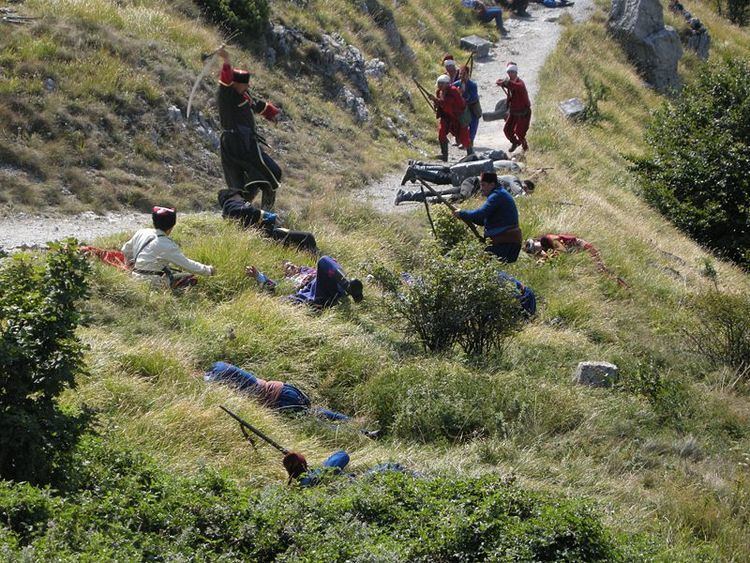
In July, 1877 four Russian corps crossed the Danube River and entered Bulgaria. To precede the main Russian army Joseph Vladimirovich Gourko led a detachment to capture the vital Balkan Mountain passes. Gourko approached Shipka Pass, which was held by an Ottoman garrison of 4,000–5,000 soldiers under Suleiman Pasha.
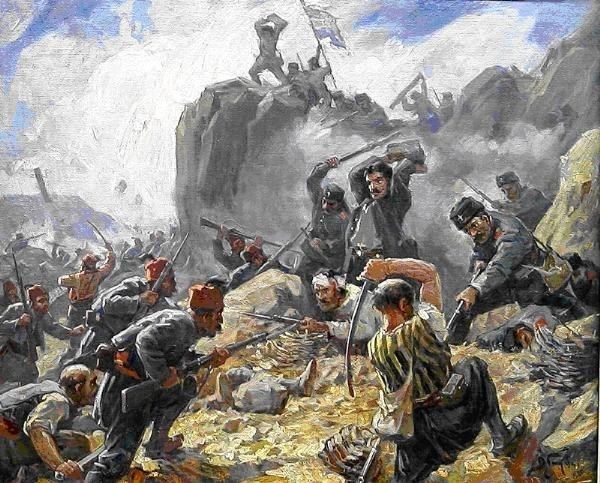
On July 17, Gourko attacked from the north with four divisions. The two flank divisions captured mountain positions but the two divisions in the center were repulsed. On the 18th Gourko attacked from the south. Again the main attack on the pass was repulsed but the Russians carried some of the trenches. Gourko planned a combined attack from the north and the south on the 19th. The next day however the Ottoman forces evacuated the pass and Russia took possession of it.

In just over two weeks Gourko had captured three important mountain passes but the main army was held up the day after Shipka Pass fell in the Siege of Plevna. The Ottoman Army made two major attempts to retake the pass in 1877, and then in 1878 Gourko delivered a final blow to the Ottoman forces in the Shipka Pass area.
Second battle
The Second Battle of Shipka Pass took place in August 1877.
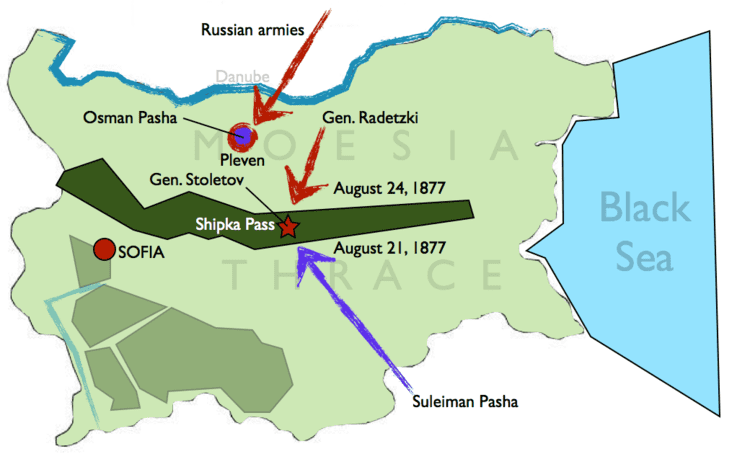
After taking the pass in July, 1877 the Russian forces built up a defensive position there. Russian General Stoletov placed his 7,500 defenders (5,500 Bulgarians, 2,000 Russians) on three positions at St. Nicholas (today: Peak Stoletov), Central Hill and the reserves in between these two points.

Suleiman Pasha gathered 38,000 Ottomans and was determined to retake the pass instead of simply bypassing it. On August 21, the Ottoman forces bombarded Russian positions and then made an attack against St. Nicholas. The attack was repulsed and the Ottoman forces dug in 100 yards (91 m) away. The next day the Ottoman forces moved their artillery up the mountain side and bombarded the pass while the infantry moved around the Russian flank. On August 23, the Ottoman forces attacked all Russian positions with the main effort again at St. Nicholas where most of the defenders were Bulgarian volunteers. The Ottoman forces thought that the volunteer positions would be easy to capture, but this turned out to be their greatest mistake. Instead, the first unit that began to retreat were the Russians on Central Hill. However, they rallied when the 4th Rifle Brigade arrived and all Ottoman attacks were repulsed. On the 26th, an Ottoman attack on St. Nicholas ( a position referred to as "the Eagle's Nest") reached the Russian trenches but was repulsed again by a Bulgarian bayonet charge. More Russian reinforcements arrived and on the 26th, an attack was made against the Ottoman position but driven back to Central Hill. This ended the battle for all practical purposes.
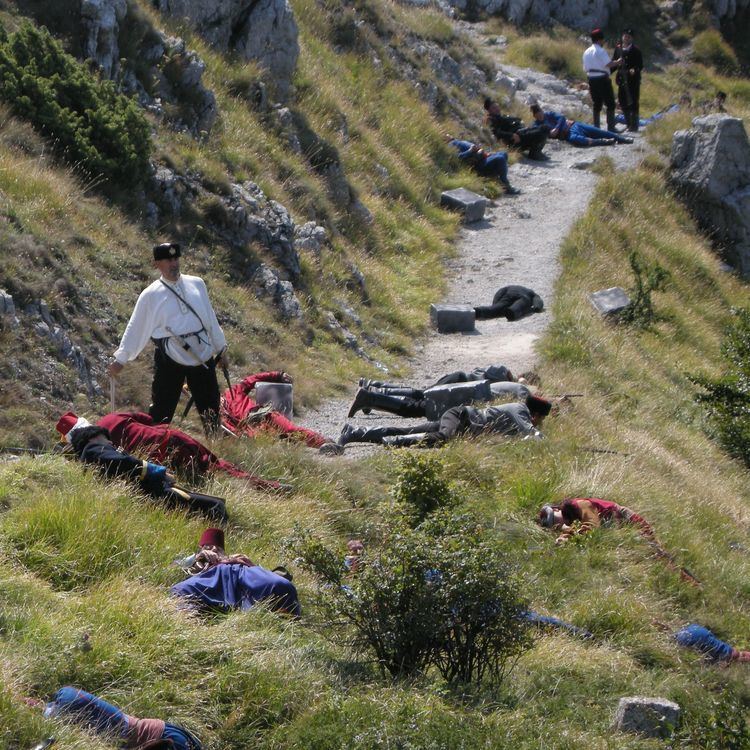
The Russians and Bulgarians had made a gallant stand. Near the end having run out of ammunition, they threw rocks and bodies of fallen comrades to repulse the Ottoman attacks. Suleiman Pasha would attempt to retake the pass one more time in 1877.
Third battle
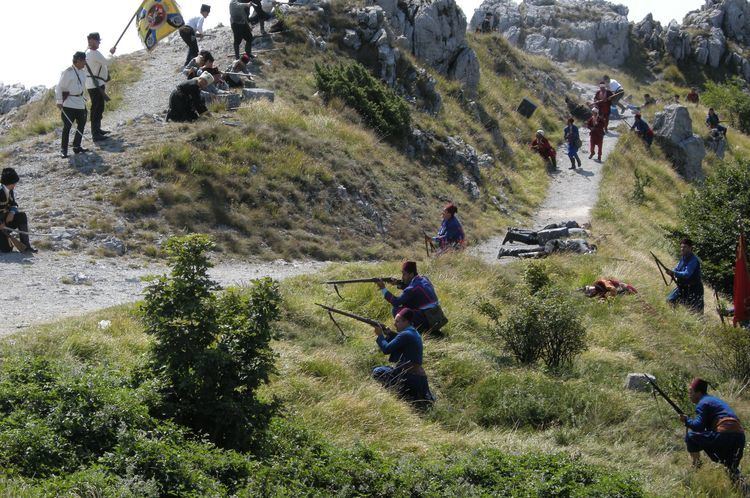
Suleiman Pasha made a second attempt to retake Shipka Pass from the Russians after a failed attempt in August. The Russian defenses had continually been worked on since August but reinforcements were limited due to the siege of Plevna. On September 13, Suleiman began to shell the Russians. The bombardment continued in earnest until the 17th when Suleiman launched a frontal assault against the St. Nicholas position. Capturing the first line of trenches, the Ottoman forces moved towards the summit. General Fyodor Radetzky, now commanding the defenses, brought up reinforcements and a Russian counterattack drove the Ottoman forces from all captured ground. Secondary Ottoman assaults to the north were repulsed as well. This would be the last attempt the Ottoman forces made to retake Shipka Pass.
Fourth battle
The Fourth Battle of Shipka Pass from January 5–9 was the final battle for Shipka Pass and a crushing Ottoman defeat.
Background
In December, 1877, the fortress of Plevna surrendered to the Russian Army, freeing a significant number of Russian troops. General Gourko now had as many as 65,000 soldiers to contend with the Ottomans. First Gourko forced the Araba Konak Pass and took Sofia. From Sofia, he moved south through the Balkan Mountains to cut off the Ottoman army fronting Shipka Pass.
The battle
General Radetzky, commanding the garrison, made preparations to attack from the pass on January 5 while Gourko brought up two columns under Generals Mikhail Skobelev and Nikolai Mirskii to cut off the Ottoman retreat. On January 8, Radezky's attack began but Skobelev was held up by unexpectedly heavy resistance and Mirskii attacked unsupported, making little progress. On January 9, Mirskii faced an Ottoman counter-attack, but Skobelev was able to move forward in support and defeat the Ottoman forces. Completely surrounded, the remaining Ottoman forces under Veissel Pasha surrendered the same day.
Aftermath
Russian forces under Gourko were able to crush Suleiman Pasha's army at the Battle of Philippopolis several days later and threaten Constantinople.
Today the Shipka Pass is in the Bulgarka Nature Park and is home to a monument commemorating those Bulgarians and Russians who died in the battle.
